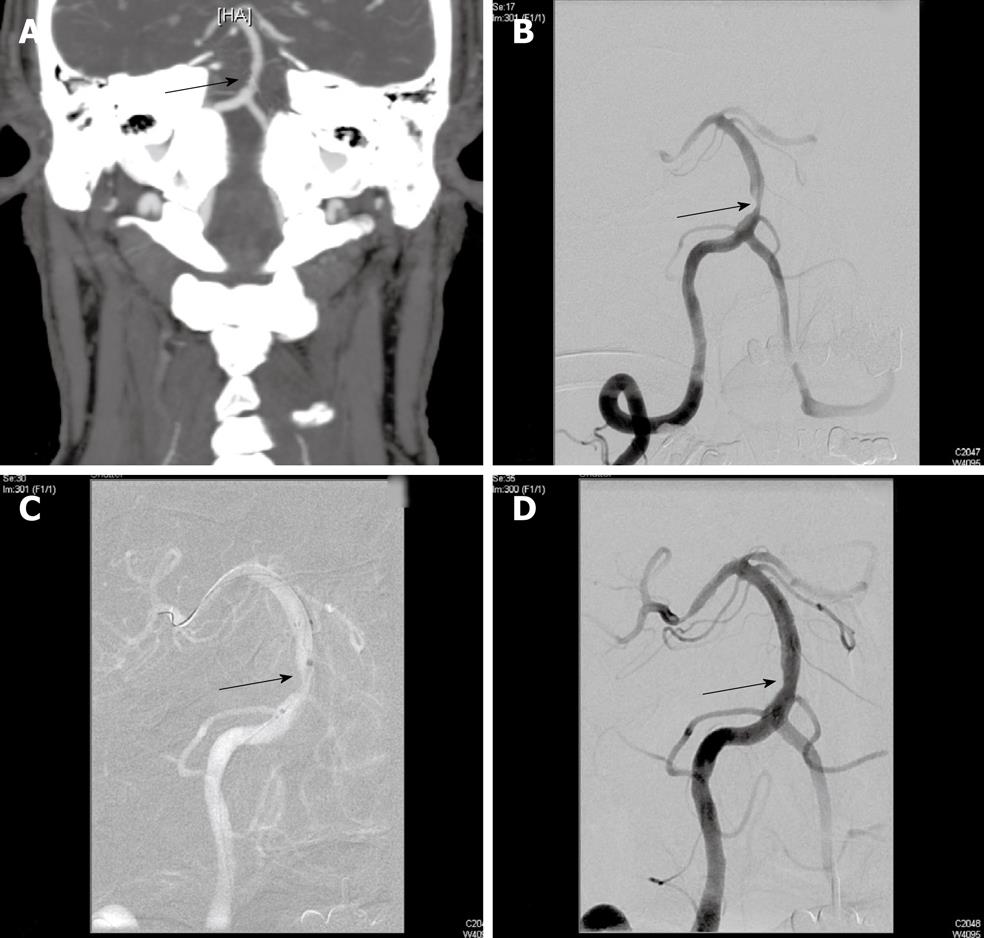Copyright
©2010 Baishideng Publishing Group Co.
World J Radiol. May 28, 2010; 2(5): 166-171
Published online May 28, 2010. doi: 10.4329/wjr.v2.i5.166
Published online May 28, 2010. doi: 10.4329/wjr.v2.i5.166
Figure 1 Seventy-nine years old man with hypertension and hyperlipidemia developed episodic dizziness, visual distortion, dysarthria, and somnolence refractory to anti-platelet therapy using aspirin and dipyridamole.
A: Computed tomography of the brain with contrast, CTA protocol and coronal reconstructions, shows severe focal stenosis of the basilar artery (arrow); B: Catheter arteriography of the right vertebral artery during arterial phase in frontal projection confirms 80% stenosis the proximal basilar artery (arrow); C: Fluororadiography during endovascular revascularization using stent angioplasty shows placement of a 3.0 mm × 15 mm Wingspan® self-expanding nitinol stent (arrow) symmetrically across the stenosis after angioplasty using a 2.5 mm × 9 mm Gateway® angioplasty balloon catheter; D: Catheter arteriography of the right vertebral artery during the arterial phase in frontal projection at the conclusion of the procedure shows residual 40% stenosis of the basilar artery after angioplasty and stent placement (arrow). Out-patient follow-up with non-invasive imaging using transcranial Doppler ultrasonography shows stable normal velocities in the treated artery. The patient remains stable on aspirin and clopidogrel.
- Citation: Komotar RJ, Kellner CP, Raper DM, Strozyk D, Higashida RT, Meyers PM. Update on the natural history of intracranial atherosclerotic disease: A critical review. World J Radiol 2010; 2(5): 166-171
- URL: https://www.wjgnet.com/1949-8470/full/v2/i5/166.htm
- DOI: https://dx.doi.org/10.4329/wjr.v2.i5.166













